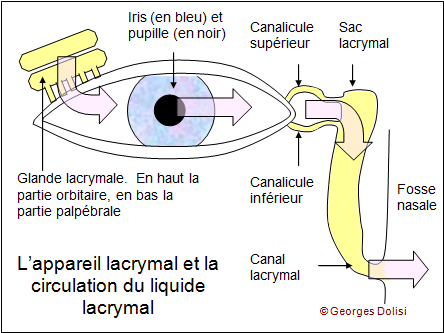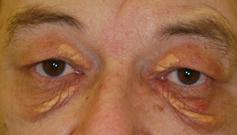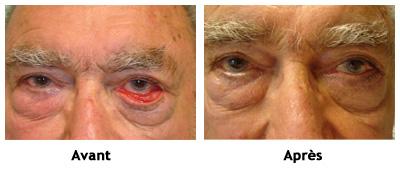A chalazion is caused by an inflammation resulting from a blockage of the duct of a meibomian gland, located in the upper and/or lower eyelid.
This manifests as a small lump in the eyelid, which may increase in size over the course of a few days. The swelling may become red, tender or painful, and may sometimes be accompanied by a warm feeling around the eyelid.

Natural course and infectiousness
In most cases, a chalazion will disappear spontaneously within a few weeks without any medical consequences. A chalazion is not contagious.
Chalazion or stye (organlet)?
Although both a chalazion and a stye present as a lump in the eyelid, they are two different conditions:
- An orgelet is an acute infection of a sebaceous gland and is usually painful and inflamed.
- A chalazion, on the other hand, is not an infection, but a sterile inflammatory response of the body to accumulated sebum.
With a chalazion, the oil in the meibomian gland becomes too thick to drain normally. This causes it to build up and cause swelling. Sometimes the gland wall breaks, causing the oil to spill into the surrounding tissue. This leads to an inflammatory response, which can result in scarring.
Treatment of a chalazion
Treatment is usually simple and may include:
- Warm compresses: 5 to 10 minutes, four times a day, to reduce swelling and help the gland drain.
- Antibiotic eye drops or ointment: if there are signs of an associated bacterial infection.
- Cortisone injection: In rare cases, an anti-inflammatory drug may be injected directly into the chalazion to reduce swelling.
- Surgical removal: if the chalazion persistent, causes discomfort or for cosmetic reasons.
In case of recurring or multiple chalazions
In frequent or multiple chalazions, consideration should be given to a general sebaceous gland disorder, such as acne rosacea. In this case, long-term treatment with oral medication may help to improve the composition of the sebum and prevent new blockages.







